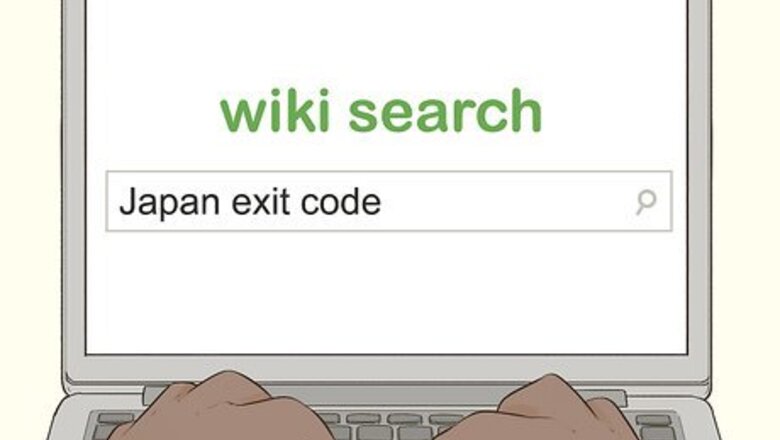
views
X
Research source
Calling the USA from a Telephone
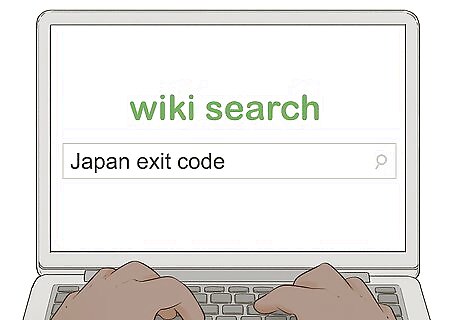
Obtain your country's international exit code. Your country’s exit code allows you to dial out of your country. If you’re dialing a U.S. number from your landline or cellular phone, you’ll need to enter your country’s exit code before doing anything else. To find your country’s exit code, do this online search: “
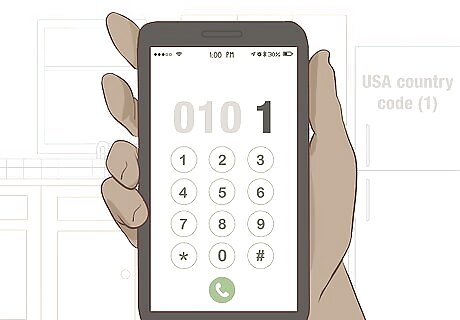
Know that the USA country code is “1.” A country code allows you to call one country from another country — in this case, the country code “1” allows you to call the USA from outside of the USA. Country codes comprise 1 to 2 digits; you dial them after you’ve dialed your country’s exit code — for example, “010” + “1” would be the first 4 numbers to dial when calling the USA from Japan.
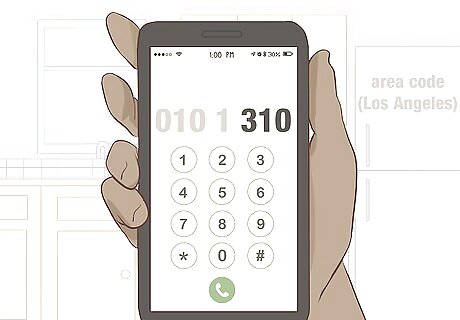
Confirm that you have the correct area code. An area code narrows your call geographically, and refers to a specific city. U.S. phone numbers are preceded by 3-digit area codes. If you don't know which area code to dial, the North American Numbering Plan and Area Code Locations websites can help. Some popular U.S. area codes: 310 and 424 in Los Angeles; 718, 347, and 929 in New York City; 202 in Washington, D.C. You’ll notice that many cities will have more than one area code. Mobile phone users may have area codes that don’t match the cities in which they live; for that reason, if you're unsure of the area code, it’s best to double-check with the person you’re intending to call. If you're dialing from within the USA and your phone number has the same area code as the number you’re calling, you may only need to dial the 7-digit local number. If the area has multiple overlapping area codes, however, you may need to dial their area code plus the number “1.”
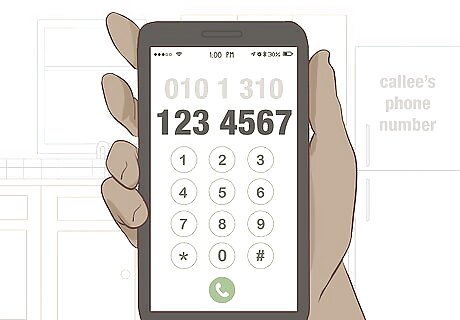
Double-check the local phone number you wish to dial. The local phone number will be 7 digits long. If you’re calling a business, you can likely double-check their phone number via an online search; if you’re calling a person, you can double-check with them or by looking at your phone book.
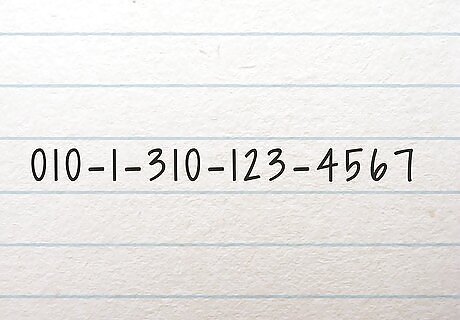
Write down the complete phone number. Before dialing the number, you may want to write it down or otherwise record it — that way, if your call doesn’t go through the first time, you can easily redial it.
The order of the numbers will be
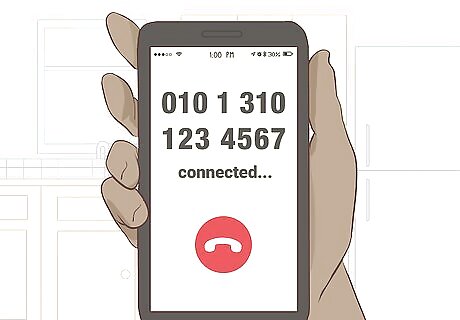
Dial the number and wait for the call to be connected. Once you’ve written the number down, dial it into your phone and wait for the call to be connected. Unless you get a busy signal or the call doesn’t go through, you should hear ringing — just as you would with a regular, local call.
Considering Cheaper Call Methods
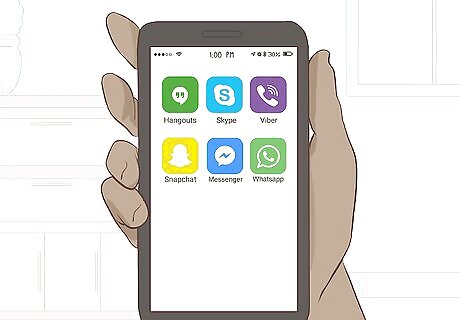
Use an Internet-based application. VoIP (voice over Internet protocol) applications allow you to make international phone calls at cheaper rates than through your phone provider. To make a VoIP call, you need a computer, tablet, or smart phone, plus an Internet connection. Tip: Popular VoIP applications include Skype, Google+ Hangouts, Viber, and Jitsi. If you call the USA often, check to see if your VoIP application offers subscriptions or monthly flat rates for a predetermined number of minutes; these subscriptions can significantly lower your per-minute VoIP costs. Many applications (eg., Whatsapp, Skype, and Facebook) allow users to place free calls within the applications — meaning that both you and the person you call would need to have the apps open on your respective devices.
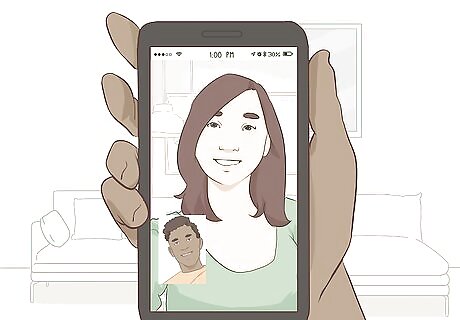
Video chat instead. If your computer, tablet, or smart phone has a camera and an Internet connection, you may be able to video chat with your contact in the U.S. instead of calling them on the phone. Many social media sites and applications offer video chat for free. Some popular video chat applications include Google+ Hangouts and Skype.

Purchase an international calling card. If you have limited Internet access but you have a landline with free local minutes, a calling card may be your best option. Calling cards vary greatly in rates — sometimes they seem cheap but have hidden fees. Look for a calling card that offers easy-to-understand pricing and no additional fees. Popular calling cards include Pingo, EnjoyPrepaid, Comfi, Nobelcom, and CallingCards. Note that calling cards are best for landlines and mobile phones with unlimited local minutes. Unless your mobile phone has unlimited local minutes, a calling card will not be the best option for you, as you’ll end up paying for the calling card minutes plus your mobile minutes.

Consult your phone provider. If you consistently make calls to the USA, ask your phone provider if they have any international calling plans or can offer you a discount.
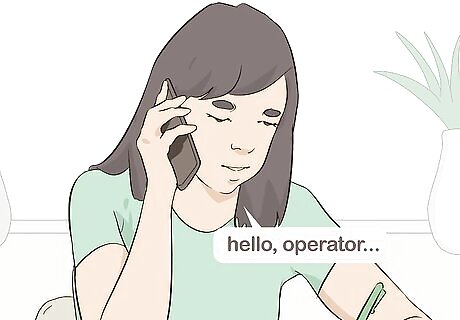
Call collect. Calling collect reverses the charges so that the person you call pays for the call instead of you. Unless the person or company you’re calling has expressly told you it’s okay to call them collect, this is not advisable. To call someone collect internationally, have the U.S. area code and 7-digit phone number ready, dial your international phone operator, and ask them to place the call for you. Phone numbers for international phone operators vary depending on which country you’re in; an online search of your country’s name plus the words “international phone operator” will reveal the number for yours. In the UK, you can call your international inland operator on 155; in Japan, you can call the international telephone operator at 0051.
Practising Good Etiquette
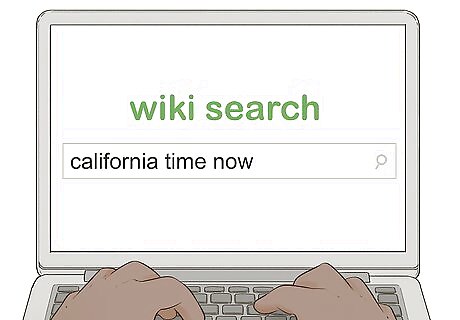
Check the local time. There are 9 time zones in the USA; these range from -4 to +10 hours in relation to Coordinated Universal Time (UTC). If you’re unsure of which time zone the recipient of your call is in, double-check with an online search of “current time in
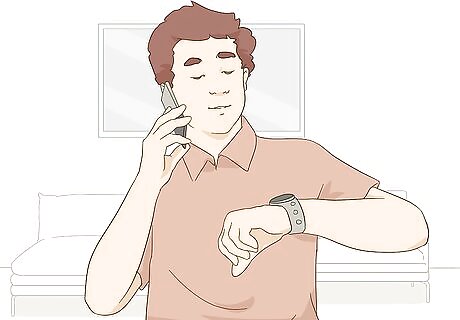
Ensure that you are not calling too early or too late. Your family and close friends might forgive you for calling too early in the morning or too late at night, but business contacts might not be so forgiving. Be sure that you take their local time into consideration before calling!
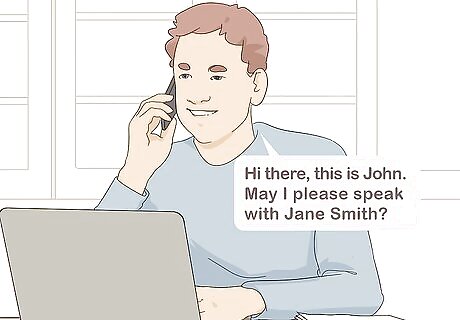
Tailor your greeting to who you’re calling. Phone conversations begin in different ways depending on cultural customs and the nature of the relationship between the caller and his/her recipient. If you’re calling a friend or family member, you can get away with your usual greetings (“Hey!”), but if you’re calling a business contact, you will likely need to be more formal (“Hi there, this is John. May I please speak with Jane Smith?”). If English isn’t your first language, you may want to practice what you want to say a few times before making the call.
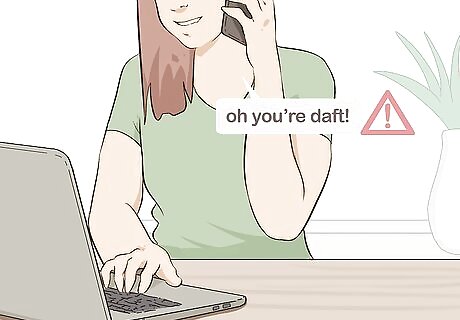
Be aware of cultural differences. For example, in the UK, friendly banter and swearing are more accepted than in the USA. Calling a colleague “daft” in a loving way probably won’t translate too well to an American who isn’t familiar with British culture.

Speak slowly and clearly. If you get anxious about speaking to people on the phone, it will be tempting to speak quickly and/or quietly. Resist the urge to do so, and really force yourself to speak slowly and clearly. The more you have to repeat yourself, the longer your call will take — potentially costing you more money, if you’re paying by the minute!

Prepare a message. If it’s a possibility that you’ll have to leave a voice message, prepare one in advance. Having a message prepared in advance will help you cover all of your key points clearly and concisely; that way, you don’t have to call back with anything you’ve forgotten to say.












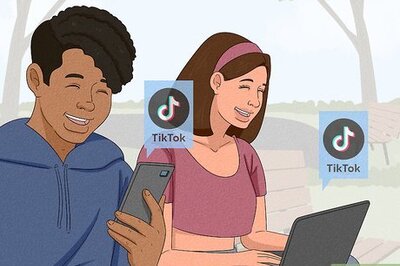





Comments
0 comment